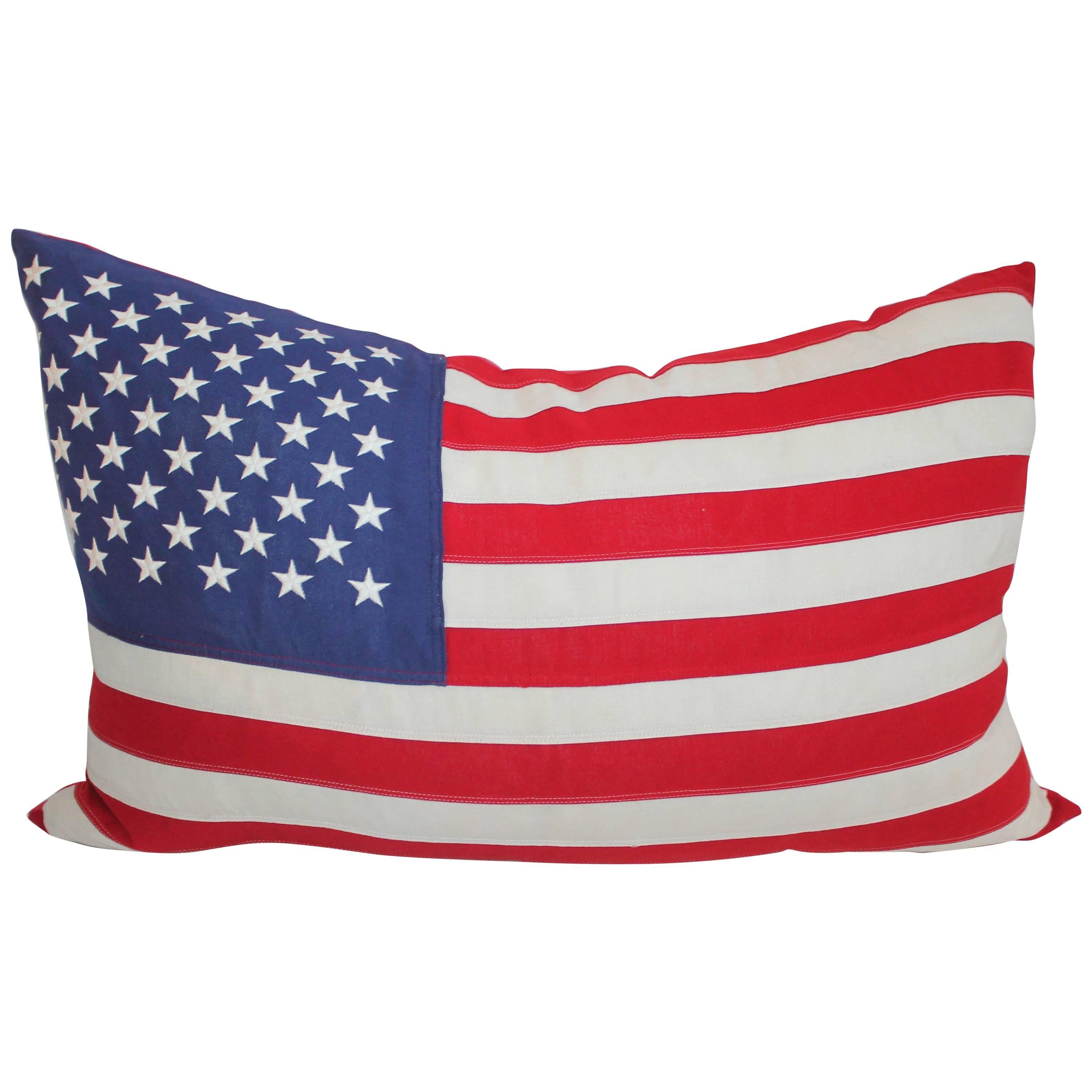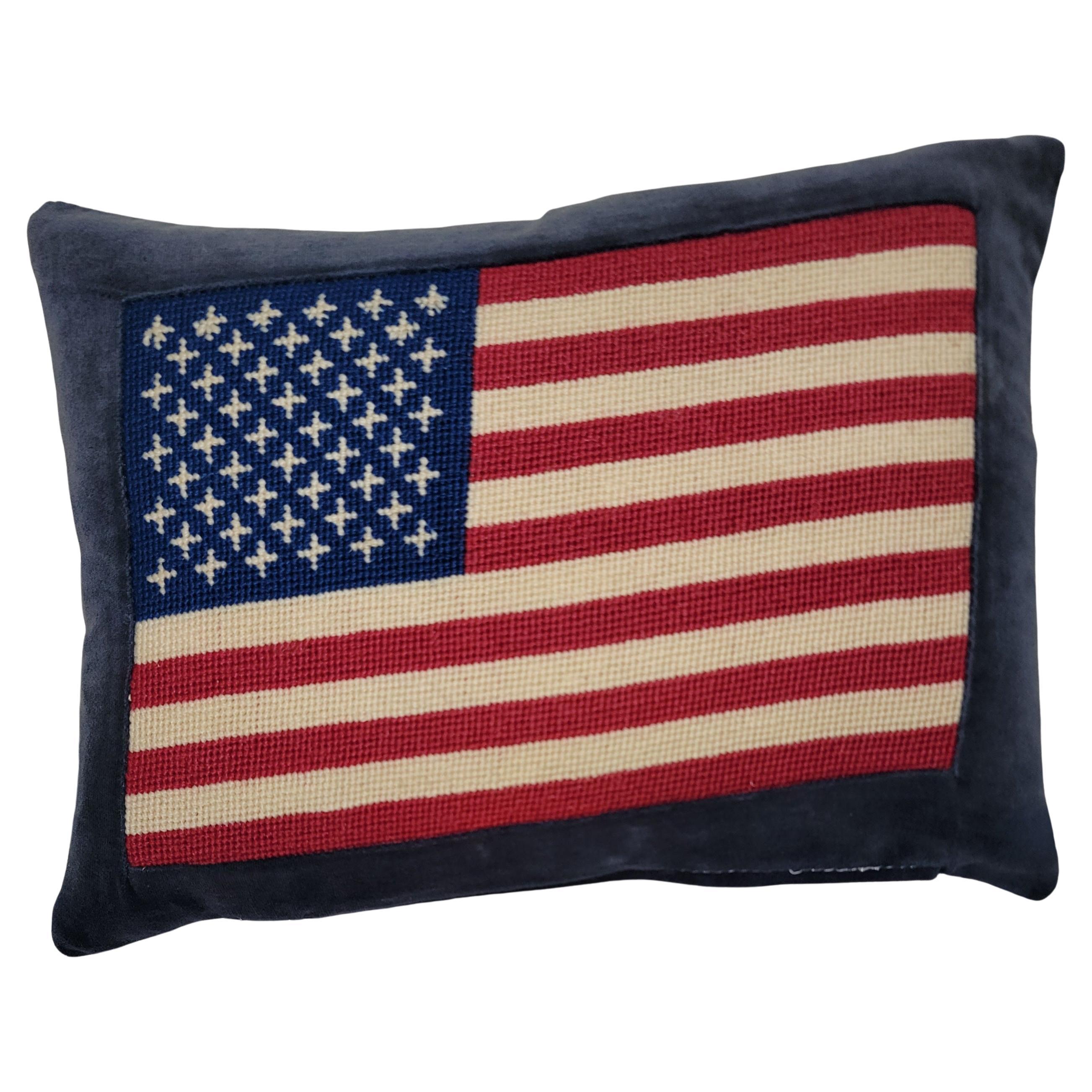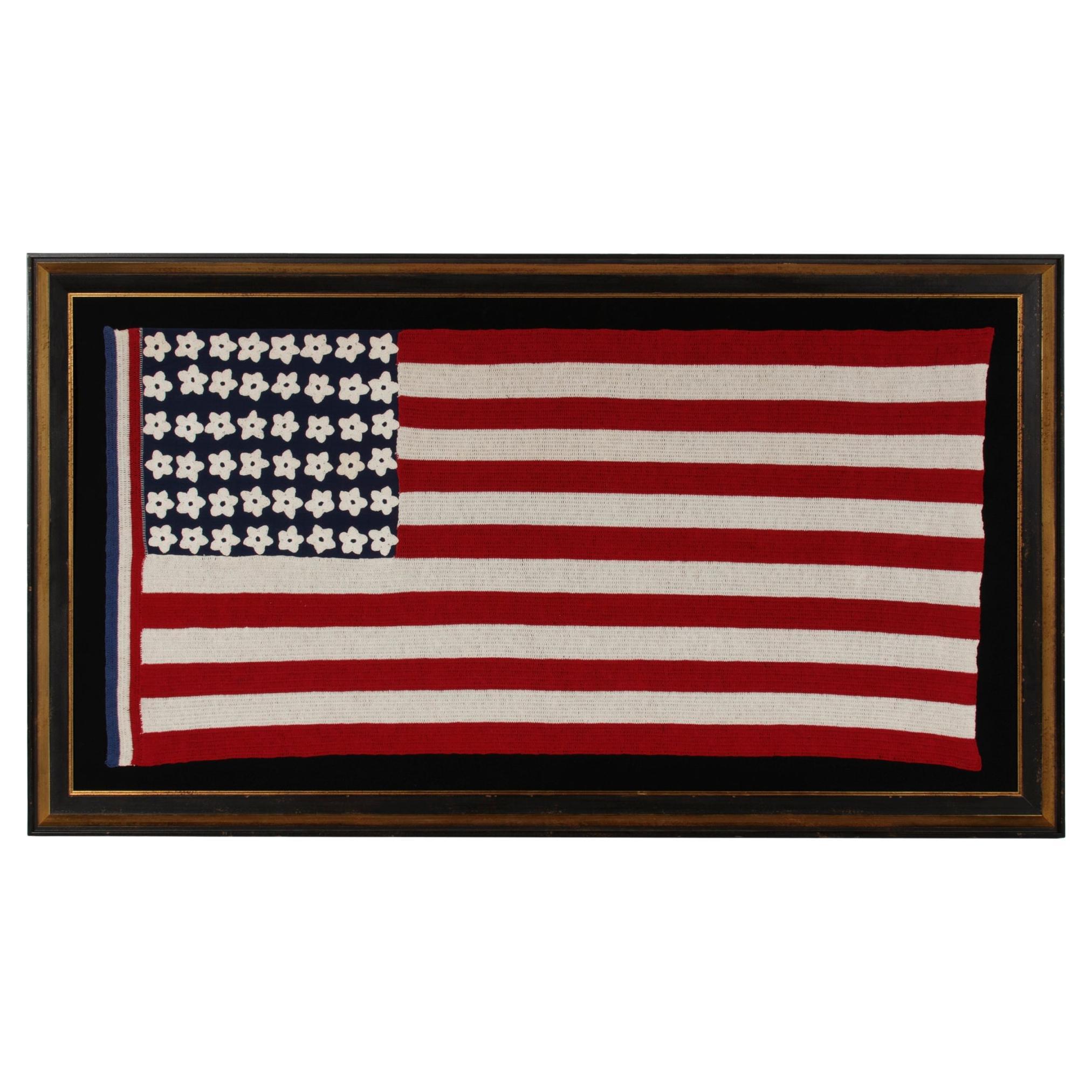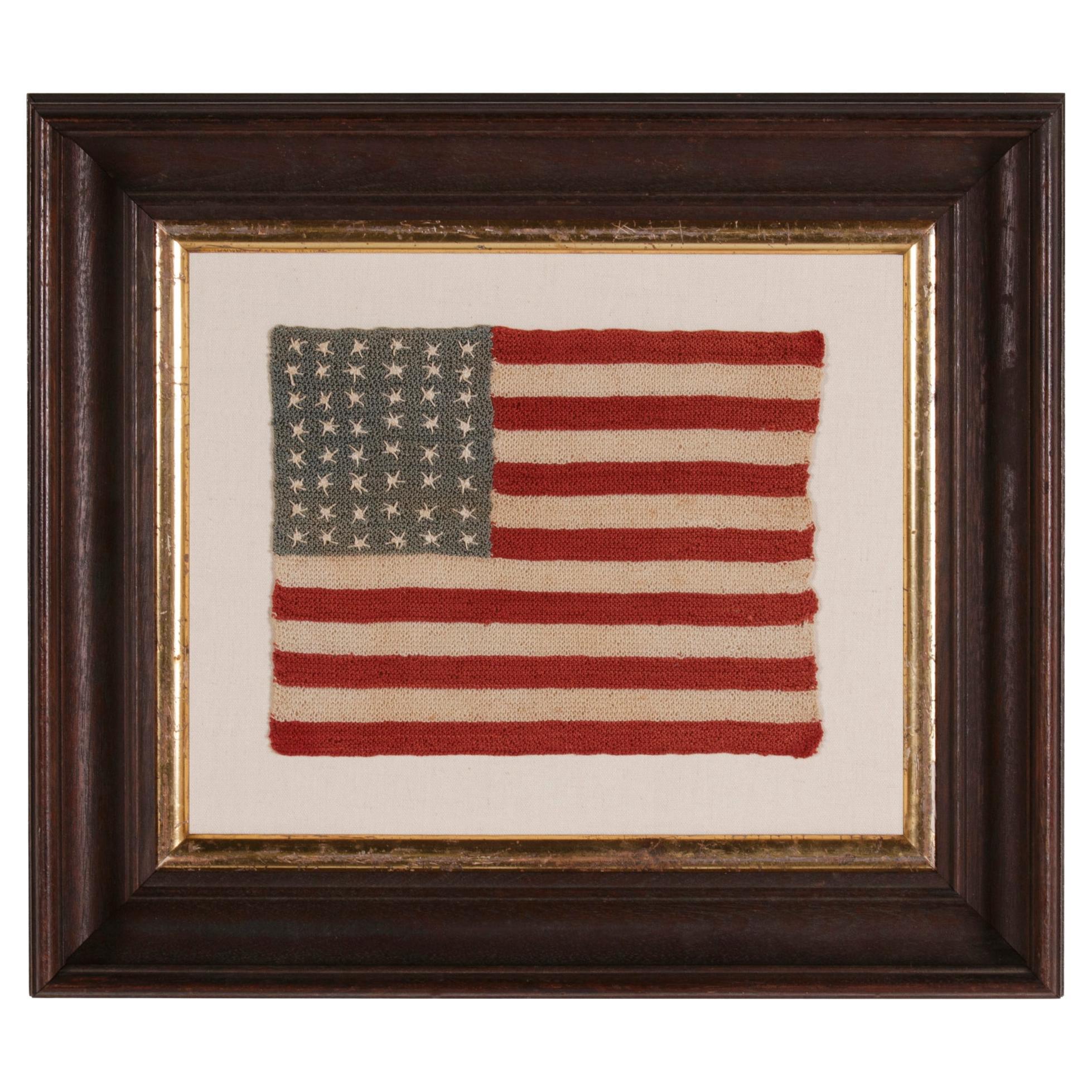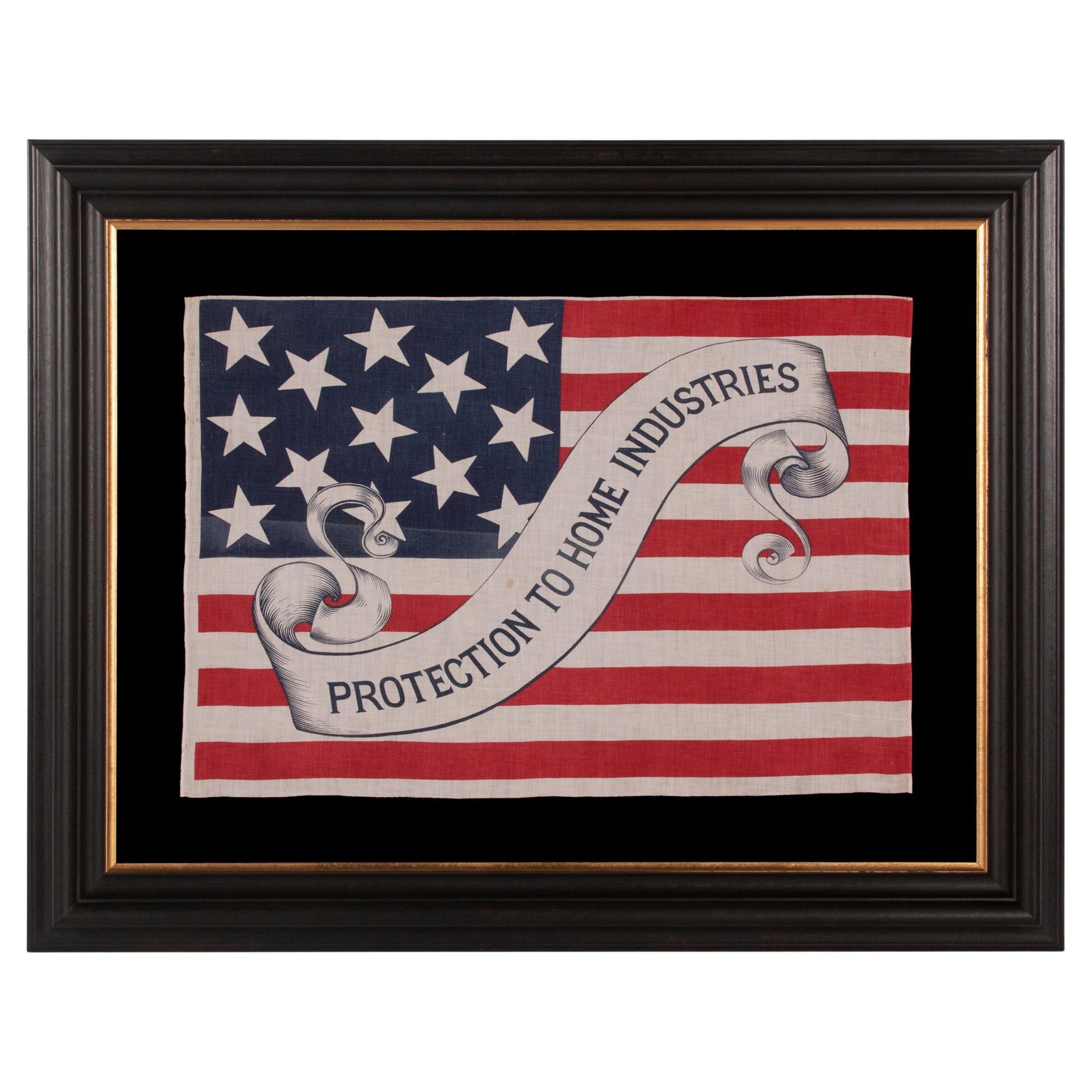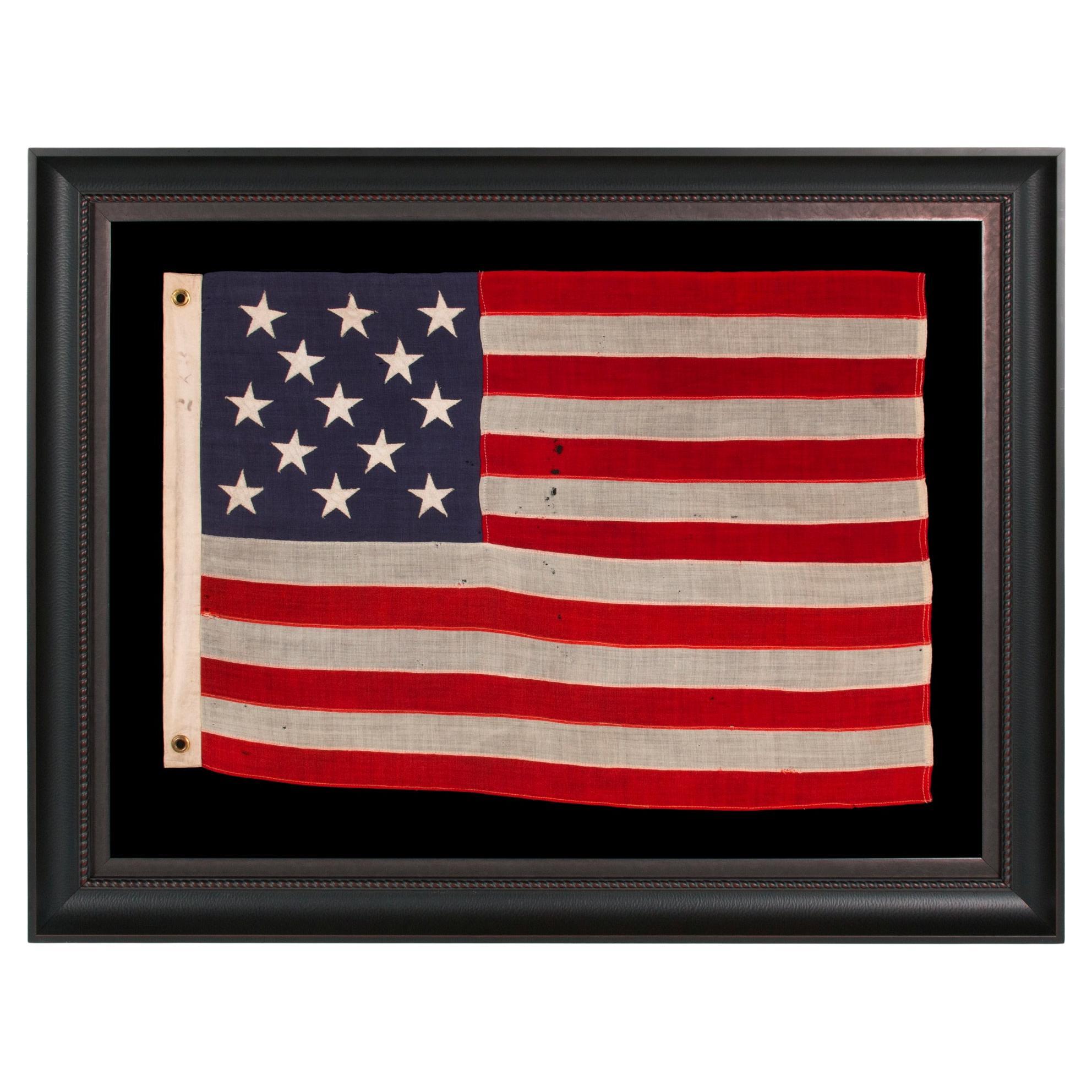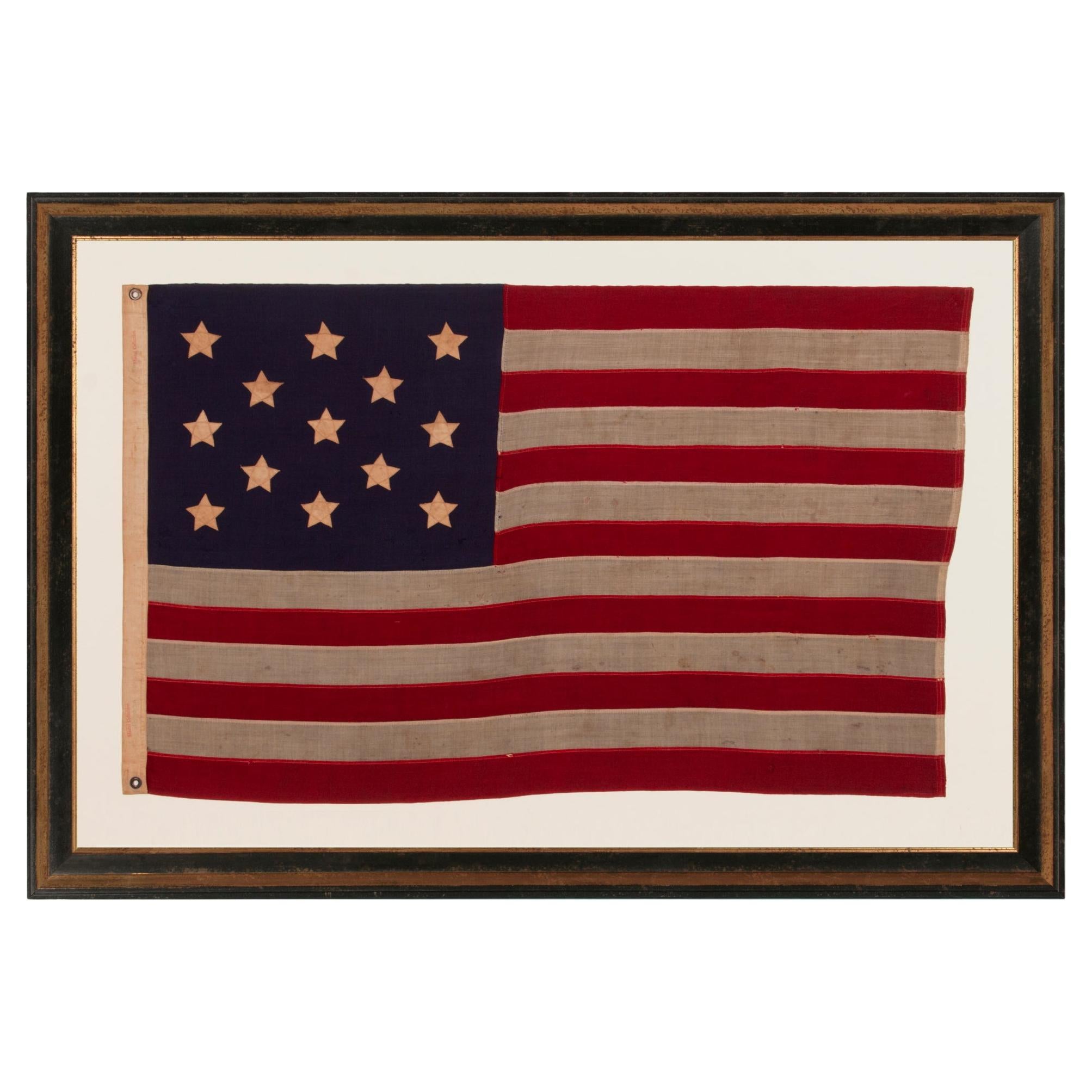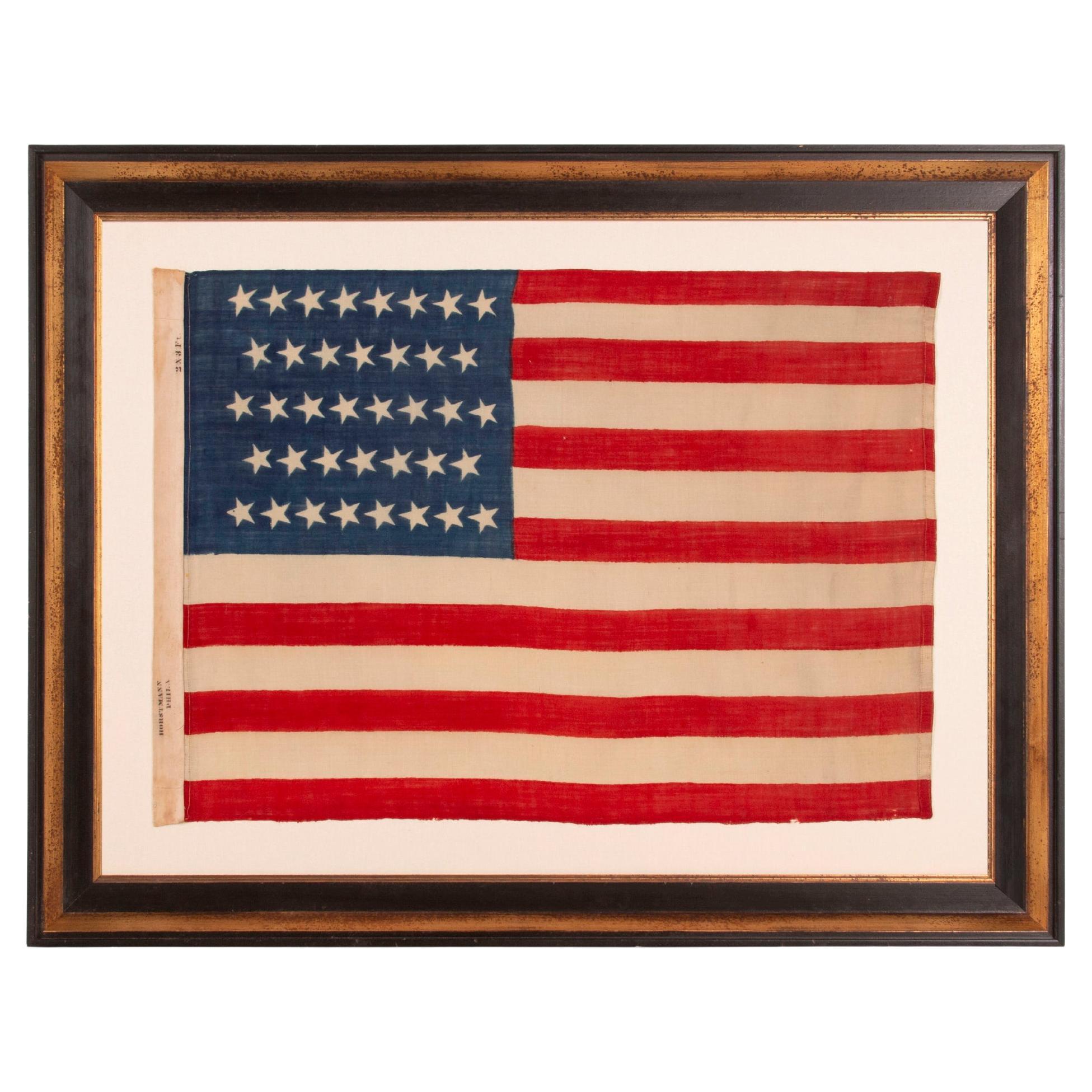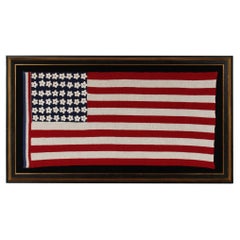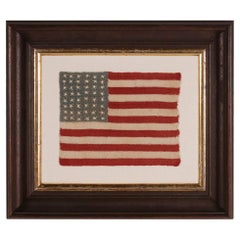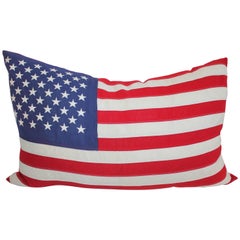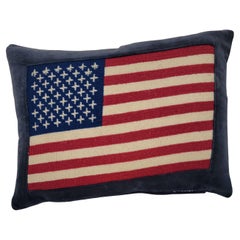
48 Star Flag, Designed And Commissioned By Wayne Whipple
View Similar Items
Want more images or videos?
Request additional images or videos from the seller
1 of 7
48 Star Flag, Designed And Commissioned By Wayne Whipple
About the Item
Many people are not aware that for the first 135 years of the existence of the American National flag, there was no official way to configure its stars. In 1912, that circumstance changed with an Executive Order of President William Howard Taft. Many designs were probably brought forth, but it is not clear if a list of them survives. Possibly they were lost, forgotten, or simply went unrecorded. Whatever the case may be, Wayne Whipple was one person among the interested artists who would proceed to solidify his name in history, designing and contracting flags to be made in what would later become known as the “Whipple” pattern. He distributed these small parade flags liberally in pursuit of his goal, which were printed on cotton or silk, taking them to rallies and mailing them to influential parties with many letters of solicitation. Today surviving examples are very rare and desired by collectors.
Whipple wrote a book on the American flag in 1904, which prompted his interest in designing the first official star pattern. The star configuration that Whipple devised included 13 stars in the center to reflect the original 13 original colonies, arranged in a six-pointed Great Star or Star of David pattern. According to Whipple, this had no religious connotations, but instead was simply a logical way to display 13 stars in a star-shaped formation. The same arrangement can be seen on the back of the U.S. one dollar bill, as well as at the top of the Great Seal of the United States. Surrounding the Great Star was a wreath of 25 stars. These represent the number of additional states that had joined the Union by the time of the nation’s 100-year anniversary in 1876, and around this was a consecutive wreath of 10 stars. Whipple’s concept was that more stars could be easily added to this widely spaced outer wreath without changing the basic design, which was why he felt that it would be not only beautiful but functional as well.
Whipple pattern parade flags exist in both cotton and silk. The cotton variety may have been made in 2 different sizes. Whipple also contracted for the manufacture of triangular, patriotic pennants with an oblong, oval version of his star pattern above red and white stripes that taper to a point. Only one Whipple pattern flag has thus far been discovered with pieced-and-sewn construction, which was presented to President Taft by Whipple in 1913, then returned to Whipple and descended through the Whipple family.
According to personal letters that were written by Whipple, along with correspondence between Whipple, the White House, and the War Department, Presidents Roosevelt and Taft both approved of and endorsed Whipple’s design. Whipple befriended both men, yet campaigned with Roosevelt in 1912. When it came to the final selection of an official configuration, the War Department’s recommendations drove Taft to select the rectilinear pattern of 6 rows of 8 stars.
Mounting: The solid walnut molding has a gilded liner and dates to the period between 1870 and 1890. The flag has been hand-stitched to 100% cotton, black in color, which was washed to reduce excess dye. An acid-free agent was added to the wash to further set the dye and the fabric was heat-treated for the same purpose. Spacers keep the textile away from the glass, which is U.V. protective.
Condition: There is minor to moderate foxing and staining throughout, accompanied by minor to moderate fading. The great rarity of Whipple’s flags warrants almost any condition.
- Place of Origin:
- Period:
- Date of Manufacture:1909-1912
- Condition:See Item Description.
- Seller Location:York County, PA
- Reference Number:Seller: 48j-9281stDibs: U1111188497489
About the Seller
5.0
Recognized Seller
These prestigious sellers are industry leaders and represent the highest echelon for item quality and design.
Established in 1991
1stDibs seller since 2008
61 sales on 1stDibs
Typical response time: 10 hours
More From This SellerView All
- 48 Star Crocheted Homemade American Flag, WWII Era, 1941-1945Located in York County, PA48 star, crocheted, antique american flag of the wwii era (1941-1945), a beautiful, homemade example, with a red, white, & blue hoist and flower-like stars: Crocheted American fla...Category
Mid-20th Century American Political and Patriotic Memorabilia
MaterialsCotton
Price Upon Request - 48 Star Antique American Flag, with Hand-Crocheted Stars, ca 1917-1918Located in York County, PA48 STARFISH-LIKE, NEEDLEWORK EXECUTED STARS ON A HAND-CROCHETED ANTIQUE AMERICAN FLAG FROM THE EARLIEST PART OF THE 48 STAR ERA, 1912-WWI (U.S. INVOLVEMENT 1917-18) OR EVEN PRIOR TO ...Category
Early 20th Century American Political and Patriotic Memorabilia
MaterialsCotton
- 13 Star American Parade Flag with Rare Design, Ca 1888 Ex Richard PierceLocated in York County, PA13 Star American parade flag in an extremely rare design, with “protection to home industries” slogan on a fanciful, scrolling streamer, made for the 1888 presidential campaign of Benjamin Harrison; formerly in the collection of Richard pierce. 1888 Benjamin Harrison campaign flag, printed on cotton, with 13 large stars in a 3-2-3-2-3 pattern, upon which a whimsical, scrolling streamer is superimposed that features the slogan: “Protection to Home Industries.” There are numerous styles of both documented and undocumented, red, white, and blue bandanas and handkerchiefs, made for Harrison’s campaign in this year, as well as from the subsequent one, in 1892. Most bear variations of text to support the “Protection for American Industries” platform of the Republican Party. America was in the midst of the industrial age and there was a great deal of public interest, both in protecting growth and discouraging both imported goods and immigration. The constant stream of immigrants posed great challenges for a working families, competing for scarce jobs, in work environments that were already often far from ideal. In post-Civil War America, many of the working men were Civil War veterans. Bandanas abound from Harrison’s Campaigns, but flags do not. This example, along with three others, were once part of an 1888 patriotic quilt that was disassembled by a dealer and sold piecemeal to collectors. I eventually acquired all four. Fifteen to twenty years ago, these were the only four known copies. A couple of others have since surfaced, but the total count known still stands closer to 5 than 10. The use of 13 stars is seen in the flags of various candidates in the 19th century. Among these are Abraham Lincoln (1860 campaign), Henry Clay (1844 campaign), John Fremont (1856), and Benjamin Harrison’s grandfather, William Henry Harrison...Category
Antique 1880s American Political and Patriotic Memorabilia
MaterialsCotton
Price Upon Request - 13 Star Antique American Flag, ca 1895-1926Located in York County, PA13 STAR ANTIQUE AMERICAN FLAG WITH A 3-2-3-2-3 CONFIGURATION OF STARS ON AN INDIGO CANTON, SQUARISH PROPORTIONS, AND A BEAUTIFUL OVERALL PRESENTATION, MADE circa 1895-1926 This 13 s...Category
Antique Late 19th Century American Political and Patriotic Memorabilia
MaterialsWool
Price Upon Request - 13 Star Antique American Flag , Ca 1890-1899Located in York County, PA13 STARS WITH SHORT, CONICAL ARMS ON A SMALL SCALE, ANTIQUE AMERICAN FLAG MADE DURING THE LAST DECADE F THE 19TH CENTURY; POSSIBLY OF PHILADELPHIA ORIGIN; FORMERLY IN THE COLLECTION ...Category
Antique 1890s American Political and Patriotic Memorabilia
MaterialsWool
Price Upon Request - 38 Star Antique American Flag by Horstman Brothers, Colorado Statehood, ca 1876Located in York County, PA38 CANTED STARS IN STAGGERED ROWS, ON A CLAMP-DYED, WOOL, ANTIQUE AMERICAN FLAG MADE BY THE HORSTMANN BROTHERS IN PHILADELPHIA, ALMOST CERTAINLY FOR DISPLAY AT THE 1876 CENTENNIAL EXPOSITION; A VERY RARE EXAMPLE WITH STRONG COLORS AND GREAT TEXTURE; REFLECTS COLORADO STATEHOOD 38 star American flag, press-dyed on wool bunting, with wonderful texture and great colors. Made by Horstmann Brothers of Philadelphia, a major military outfitter, the flag is signed along the hoist with a black stencil. The stars of the flag are arranged in lineal rows of 8-7-8-7-8. Note how these are universally canted, with one point directed at roughly 11:00, when the flag is viewed on the obverse (front). This particular style of flag, from Horstmann, is exceedingly rare. Measuring approximately two by three feet, I know of just four examples in total, including this flag, all of which I have had the great privilege to own. The first two I acquired about 20 years ago. I was not yet taking digital imagery at the time, and cannot seem to locate them among my files of hard copy prints and negatives. I believe they displayed in the same configuration of staggered rows. The example that I owned more recently bore the staggered row layout, but had exceedingly crude printing, whimsical and interesting in its own right. All, I believe, have displayed their stars slightly canted at an angle, like the flag that is the subject of this narrative. A close variation that I acquired about 11 or 12 years ago also had canted stars. It was in the same scale and shared the same 8-7-8-7-8 distribution, but the rows were not staggered. Instead these were justified toward the fly end. Because the spacing was inconsistent, the resulting formation was not what one might expect, with perfect spaces for two additional stars along the hoist end (a “notched” pattern). Horstman flags made of press-dyed wool sometimes had formal bindings, sometimes had a length of fabric tape stitched along the hoist, and sometimes had no binding at all. This one has a traditional binding, made of heavy cotton twill, in the form of an open sleeve, treadle-sewn along the hoist. Near the top of this, “2 x 3 Ft.” appears in a black inked stencil, near the top, accompanied by “Horstmann. Phila.” Near the bottom. Colorado became the 38th state on August 1st, 1876. This was the year of our nation’s 100-year anniversary of independence. Per the Third Flag Act of 1818, stars were not officially added until the 4th of July following a state's addition. For this reason, 37 was the official star count for the American flag in 1876. Flag-making was a competitive venture, however, and few flag-makers would have continued to produce 37 star flags when their competitors were making 38’s. It is for this reason that 38 and 13 stars (to represent the original 13 colonies) are more often seen at the Centennial Expo. Some flag-makers would have been adding a star for the 38th state even before it entered the Union, in the early part of 1876 or even prior. In fact, many makers of parade flags were actually producing 39 star flags, in hopeful anticipation of the addition of two more Western Territories instead of one. But the 39th state would not join the Union for another 13 years, when the Dakota Territory entered as two states on the same day. The 38 star flag became official on July 4th, 1877 and was generally used until the addition of the Dakotas in 1889. Press-dyed wool flags are scarcer than those printed on cotton and silk. Because parade flags were often intended for one day's use at a parade, political rally, a reunion of soldiers, or some other patriotic event, most were made of cotton. While cotton absorbs water, short-term use precluded the need for anything more hardy. Because the Centennial Exposition lasted for a period of six months, it required decorative flags that would sustain being flown for a longer time and withstand the elements. It is reasonable to assume that press-dyed wool flags were adapted for precisely this purpose, because wool sheds water is suitable for extended outdoor use. Previous to this time they primarily saw military function. A Brief History of the Horstmann Company: William H. Horstmann (1785-1850) was the founder of what would become a major military outfitter in both Philadelphia and New York City. A solider and fourth generation passementier (textile weaver), he emigrated to the United States from Germany in 1816 and settled in the Germantown area of Philadelphia, where there was a significant concentration of textile manufacture. There he married the daughter of the most successful lace manufacturing firm, and started his own business in coach lace and military goods at the corner of 59 North 3rd Street. He imported looms from Germany and elsewhere and maintained a regular trade with his family in Europe. The company grew exponentially in size and had many addresses over its years of operation. In 1828, the William H. Horstmann Military Store opened. In 1843 it became William H. Horstmann & Sons Military Store, and in 1859 it was taken over by sons, Sigmund H. and William J., and began to operate as Horstmann Bros. & Co. The company manufactured its own goods, including flags, swords, drums, insignia, and many other items, and it subcontracted their manufacture as well, depending on financial sensibility. There were investors along the way, such as William S. Hassall and George Evans, who broke off and began their own large and successful firm. The New York branch changed its name in 1877 to that of a Horstmann partner, H.V. Allien. Both Philadelphia and New York branches filed for bankruptcy and closed in 1948. Because of its Philadelphia location, Horstmann was in a unique position to supply flags and banners to the 1876 Centennial International Exposition, and thus served an integral role in decorating the enormous, six-month long event. It is logical to presume that this extremely interesting and rare flag...Category
Antique 1870s American Political and Patriotic Memorabilia
MaterialsCotton
You May Also Like
- Large 48 Star Embroidered Flag PillowBy American Flag & Banner Co.Located in Los Angeles, CAThis monumental 48 star flag pillow is in great in great condition and has a red cotton linen pillow. The big pillow id down and feather fill.Category
Mid-20th Century American Country Political and Patriotic Memorabilia
MaterialsCotton
$375 Sale Price36% Off - Early 20thc 48 Star Flag Hand Crochet PillowLocated in Los Angeles, CAThis fine hand crochet 48 star flag pillow is made with a blue velvet background or frame front and back.The insert is down & feather fill.Category
Early 20th Century American Adirondack Pillows and Throws
MaterialsWool
$556 Sale Price20% Off - 46-Star American Flag Printed in Drum Star ConfigurationLocated in Colorado Springs, COThis is an original 46-Star American parade flag, celebrating Oklahoma statehood. Each star on the flag's canton represents a state in the Union at the time. The official flag design would update every July 4th, to include any new states added to the Union in the past year. Oklahoma, the 46th state, entered the Union on November 16, 1907. As such, this 46–star flag was the official flag of the United States from July 4, 1908, until July 4, 1912. The silk flag has a dark blue canton with 46 white printed stars. The stars are printed in an 7-8-8-8-8-7 row configuration, or “Drum design.” The flag design is completed with 13 alternating red and white stripes, each stripe representing one of the original thirteen colonies. The land that comprises Oklahoma today was added to the United States as part of the Louisiana Purchase of 1803. Throughout the 19th century, the U.S. government relocated Indian tribes from the southeastern United States to the area, and by 1900, over 30 Indian tribes had been moved to what was originally called the Indian Territories. At the same time, ranchers in Texas began to move into the area in search of new pasture lands. Although stipulations in the Indian Relocation Act agreed that the land would forever be Indian Territory, the promise of fertile farmland trumped the government’s promise of sovereignty. On April 22, 1889, they opened the land to settlement by homesteaders, creating a land run in which settlers, called “Boomers,” were allowed to cross the Texas or Arkansas border at a particular hour to claim homesteads. Settlers who illegally crossed the border earlier to stake prime land were called “sooners,” which eventually became the state’s nickname. Wagons and the Santa Fe railroad carried cartloads of men and women to blank town sites and building plots, creating ten thousand-people communities in a matter of days. The following year, the region was further divided into Indian Territory and Oklahoma Territory...Category
Vintage 1910s American Political and Patriotic Memorabilia
MaterialsSilk
- 39-Star Antique American Flag with 'Whimsical' Star Pattern, 1889Located in Colorado Springs, COThis is a 39-star unofficial American flag, handmade and printed on cotton. The flag dates to 1889 and has a unique history, thanks to its rare star-count. The flag’s canton is prin...Category
Antique 1880s American Political and Patriotic Memorabilia
MaterialsCotton
- 36-Star Printed American Flag, Rare Haloed Star Medallion, Circa 1865Located in Colorado Springs, COThis 36-star flag has stars arranged in a gorgeous and highly desirable medallion pattern. This particular medallion includes a large haloed star in the middle, two rings of stars s...Category
Antique 1860s American Political and Patriotic Memorabilia
MaterialsFabric
- 34-Star Civil War American Flag, Antique Great Star Pattern, circa 1861Located in Colorado Springs, COThe stars of this extremely rare, Civil War-era flag are arranged in what is sometimes called the "Great Flower" pattern, a large star made out of smaller stars -- named as such beca...Category
Antique 1860s American Political and Patriotic Memorabilia
MaterialsLinen
$15,500 Sale Price37% Off
Recently Viewed
View AllMore Ways To Browse
48 Star Flag
48 Stars Flag
American Flag 48 Stars
48 Star American Flag
Lost Memorabilia
1890s Men
2 Piece Printed Top Set
American Flag With 48 Stars
Antique Official Seal
Antique Star Of David
48 Star Hand Flag
Antique 48 Star American Flag
Religious Stained Glass
Glass Star David
William Taft
Dollar Pattern
Taft President
Felt Pennant
